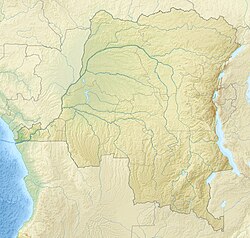| Leptopelis parvus | |
|---|---|
| Scientific classification | |
| Kingdom: | Animalia |
| Phylum: | Chordata |
| Class: | Amphibia |
| Order: | Anura |
| Family: | Arthroleptidae |
| Genus: | Leptopelis |
| Species: | L. parvus |
| Binomial name | |
| Leptopelis parvus | |
| Leptopelis parvus is only known from the Upemba National Park in southern Democratic Republic of the Congo. | |
Leptopelis parvus, also known as the Kanole forest treefrog, [3] is a species of frog in the family Arthroleptidae. It is endemic to the Democratic Republic of the Congo and is only known from the Upemba National Park (Katanga Province, southern DRC). [1] [3] [4]

